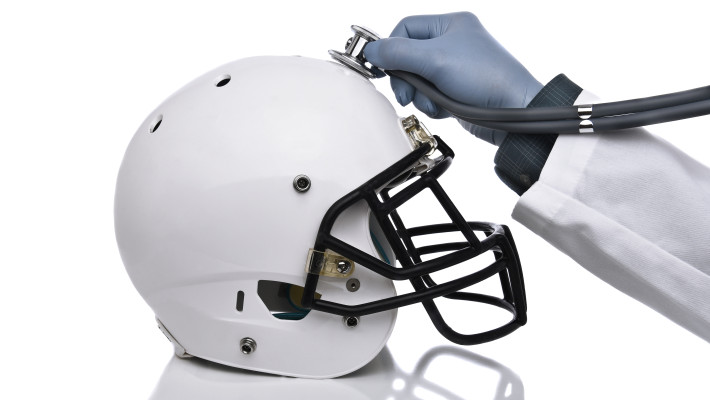
Head Games
Fumble: Have we dropped the ball on concussion?
By Gary Dix M.D., MBA, Neurosurgeon
Have you seen ‘Concussion’ starring Will Smith? Released late last year, this movie details the NFL’s attempts to invalidate Dr. Bennet Omalu’s findings on concussion and its link to Chronic Traumatic Encephalopathy or CTE, a progressive degenerative disease associated with repeated head injury.
In 2002, Omalu, a forensic pathologist, identified CTE in former NFL player Mike Webster’s brain. He then found similar changes in 17 former NFL players’ brains, all known to have sustained multiple concussions. Omalu published his findings in Neurosurgery magazine.
The NFL’s reaction?
- Its Traumatic Brain Injury Committee insisted that Neurosurgery retract Omalu’s article. (The magazine refused and published a follow-up article.)
- It adopted new concussion guidelines and an “88 Plan” to compensate players with certain conditions, but still denied a link between repeat head impacts and long-term brain injuries.
- It testified before Congress that there was no correlation between concussion and CTE.
In 2011-2012, a number of high-profile NFL players committed suicide. The autopsies revealed they had CTE. Then, former NFL players brought a lawsuit against the league, citing “negligence and a failure to notify them of the connection between concussion and brain injury.” (The NFL settled the case in 2015 for almost $900 million.)
Ironically, attempts to downplay the negative impacts of concussion drew more attention to the condition itself and to CTE. As a result, medical professionals are learning more about this condition and the best ways to treat it.
Interception – How the Legal and Medical Communities Are Tackling Concussion
Today, the Center for Disease Control (CDC) estimates there are between 1.6 and 3.8 million sports and recreation-related concussions diagnosed each year. So, has the world of sports changed because of these alarming numbers and new information about concussion?
Yes. The NCAA (National Collegiate Athletic Association) and the DOD (Department of Defense) initiated a $30 million study on head impact exposure and the treatment and management of concussion. All 50 states have implemented youth sports concussion laws, modeled after Washington State’s “Zachery’s Law,” which states that any player who suffers a blow to the head must be removed from the game, educated about concussion and given medical clearance before returning to play.
Through these developments, one thing is clear: anyone who suffers a blow to the head that results in temporary disruption of normal brain function must seek medical treatment. Signs and symptoms of concussion may be both physical (severe headache, nausea/vomiting, dizziness, incoordination, light sensitivity) or emotional/cognitive (poor concentration, confusion, irritability, depression, sleep pattern changes).
You cannot treat concussion on your own.
- Consult with an appropriate healthcare provider, such as an Emergency Doctor, Primary Care Physician, Neurologist, Neurosurgeon, Psychiatrist or Psychologist.
- Cease activities that aggravate symptoms.
- Limit use of aspirin, other blood thinners, alcohol and recreational drugs.

Dr. Gary Dix, MBSP Neurosurgeon
If you’ve suffered a blow to the head, don’t make light of the situation. Seek medical advice so that you can avoid complications and the long-term effects of this common condition.
Contact an MBSP neurosurgeon today. We’re specialists in peace of mind and relief of pain.



